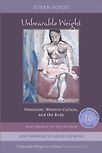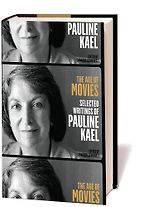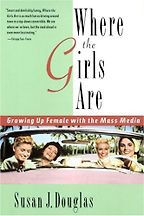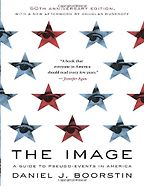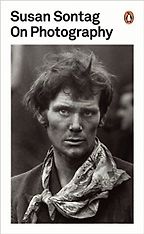You are a cultural historian and philosopher and have written widely on popular culture. What does popular culture tell us about society?
One of the things that the books I have chosen have in common is that they take popular culture very seriously. They recognize, as I do, that popular culture is a dominant force in people’s lives and can’t simply be dismissed as trivial or mere entertainment. Popular culture, more and more, shapes our fantasies, our expectations, our beliefs about what is real.
The old academic notion that popular culture is lowbrow, superficial and unworthy of exploring is completely off the mark. Lots of academics nowadays would agree with me, but only because they have imported sophisticated theory and obscure jargon into their study of pop culture. I prefer writers who understand the power and pleasure of popular culture in a more “ordinary” way, and then go on to look deeper.
“Popular culture is a dominant force in people’s lives and can’t simply be dismissed as trivial or mere entertainment. Popular culture, more and more, shapes our fantasies, our expectations, our beliefs about what is real.”
I was born in 1947, in the first wave of the baby boom, and was part of the first generation to grow up immersed in television and popular music. I have always felt the force of pop culture in my life. But it was only at a certain point that it became something that I felt I could write about and be taken seriously. People like Pauline Kael, who authored one of my book choices, made it possible for me because they obviously adored popular culture – in her case the movies – but they neither puffed it up nor dumbed it down. They talked about it with intelligence and curiosity and also as a barometer of where people were at and where society was going.
With the growth of the internet, the arenas of popular culture that have infiltrated people’s lives have multiplied and become much more invasive. Even to an avid follower like me, it is growing faster than I can possibly keep up with. I count on my students and daughter to keep me current!
Much of your work examines the treatment of women in popular culture, doesn’t it?
Yes, but I would say gender rather than women is my main interest. As someone who did her doctorate in philosophy, I didn’t learn to do women’s studies in the usual way — that is, focusing on the history of women, their writing and their social roles. The history of philosophy is dominated by men, and my first writing was on male philosophers and the particular kinds of biases that have developed because of their dominance.
Over time, as I moved out of philosophy and into cultural studies, I became interested in the way women and their bodies have been depicted historically and in the popular media. Inevitably, that led me back to men, too. After the publication of Unbearable Weight, I would be giving talks about women and how their bodies are depicted in magazines and television, and there would be men in the audience who said “What about us?” And they’d talk about the pressure to be muscular, tall and virile. And of course, they were right. So, very naturally, my study of how women are depicted in popular culture led to a study of how men are depicted. To me, they are intertwined and interdependent.
Isn’t there something rather elitist and snobbish about academics deconstructing something that is – by definition – popular and widely enjoyed by the public?
I understand exactly what you’re saying. I think that this is an attitude you do see in academics who were never particularly interested in popular culture when they grew up, but who came to it later on as a trendy academic speciality. I think you get a very different kind of writing from Pauline Kael and Susan Douglas, who is also on my list, who grew up loving popular culture. To me, that must always remain part of my exploration of popular culture – What gives pleasure in it? How and why does that change over time?
“Very naturally, my study of how women are depicted in popular culture led to a study of how men are depicted. To me, they are intertwined and interdependent.”
Some parts of popular culture today are extremely disturbing — much of reality television, the emphasis on physical perfection, tabloid sensationalizing — but even the worst of it is informative of what we’re drawn to, what we’re afraid of, what is being sold to us, and the power of certain ideas and images in our lives. I don’t disdain that power in the slightest. In fact, I freely admit that I am addicted to some highly exploitative, trashy entertainment, such as Real Housewives and The Bachelor. And I don’t just watch them because they provide grist for my critical mill. In fact, I would say that my insights into these shows, to the degree that they are on the mark, come from the fact that I experience myself as inside our culture, not apart from it. What gives me pleasure is not so often very different from what gives pleasure to someone who doesn’t spend so much of her time analysing it. The difference is that I watch, I enjoy – or am repelled, or angry- and then I ask “why?”
Let’s take a look at your first book now. For those who may not be familiar with Pauline Kael, I wonder if you can tell us who she was?
She became a film critic quite late in life, when she was in her 40s. She had studied philosophy at Berkeley, but it took her a long time to establish herself. She eventually ended up at the New Yorker magazine where she created quite a stir because of her impatience with the stuffiness of film criticism at the time. She rejected the way most critics approached films by over-theorizing, without regard to what the movies made them feel. She also disliked their general disdain for pop movies and their elitism. She hated clubbiness of any sort.
Kael brought to her reviews a combination of the visceral and the intellectual that I found absolutely delicious. When the New Yorker came out, I used to rush out and buy it – for me, reading her was like eating a scrumptious meal. She very quickly gathered both extreme advocates and those that found her to be impossibly idiosyncratic and her tone way too colloquial.
Her review of Martin Scorsese’s Raging Bull is a classic – “Jake says, “You dumb f—k,” and Joey says, “You dumb f—k,” and they repeat it and repeat it. And I think, What am I doing here watching these two dumb f—ks?”
Exactly. She was not afraid to employ rough colloquialisms. Kael understood, rightly, that they lent vitality and reality to writing. And she was conversational, often to the chagrin of the grammar-checkers at the magazine. There would be interruptions and interjections; it was like talking – but extremely intelligent talking. Her reviews were full of unexpected insights. She certainly had her favourite directors, but you could never predict exactly what she was going to say.
As I was looking over her work again in preparation for this interview, it really struck to me, for example, how in one review she could say things that might drive a feminist crazy and then in another review be full of feminist insight way ahead of her time. She was non-ideological and non-dogmatic; there was something so fresh and engaging about her. She was a real individual.
She is still delicious to read, even though the movies aren’t currently playing. But whether or not she is still widely read, the fact is that she cracked open cultural criticism for the rest of us, making it possible to write seriously about Jaws and The Godfather and not just Ingmar Bergman. She made the use of a colloquial, more energetic critical voice possible. She also clearly loved sex in the movies, and talked about it frequently and vividly. In a then quite reserved magazine like the New Yorker, that was truly taboo-breaking. She showed you could be smart and still talk like a regular person. There was something so incredibly refreshing about that.
Has the golden age of film reviews died and been replaced by aggregator sites like Rotten Tomatoes?
I don’t think we have anyone today who is a great film reviewer. What we have today are collective sites like Rotten Tomatoes, where viewers count stars, we have a lot of pedestrian reviewers, and then we have some Pauline Kael clones. But to be a Kael clone is precisely not to be like Kael, because she was so committed to being who she was and no-one else. So, while there are elements of her style and approach that have become conventionalised within film criticism, for that very reason they are no longer exciting and fresh — which her work always was. I think the people writing for the New Yorker now are very intelligent and they do try for what Kael had, but mostly, for me, it falls flat.
Your second book was received with much critical acclaim when it was published in 1995. Please tell us more.
More and more over the last 20 years, academics, in addition to their scholarly work, have aspired to write books that cross over to a more general readership. Susan Douglas, who teaches at the University of Michigan, is among those able to do it with brilliant success.
Where the Girls Are is about a particular generation of women growing up in post War America, and the impact popular media had on their lives, both for good and for bad. It weaves wonderfully smart, often funny, always engagingly written discussions of pop music, movies and television shows with Douglas’s own development as a feminist. Yes, it’s unabashedly feminist—but it isn’t a speech. It’s an exploration of the push-pull of growing up female at a transitional time, a time in which attitudes toward women were changing, unevenly, and how pop culture reflected the tensions of the times. Douglas is great at showing how the same show — Mary Tyler Moore, for example — can be both empowering and diminishing of women at the same time. And she’s wonderful at chronicling how the male media responded to early feminist demonstrations and icons such as Steinem. But none of it is impersonal “history” —throughout, Douglas writes about her own experiences and how they reflected those of a whole generation. This book is history, memoir, sociology, media studies, all at once – immensely informative and very entertaining.
In the course of describing the different stages of the development of pop culture, the book offers a number of really important new cultural insights. For example, when we think of the music of the 1950s and 60s, we remember Elvis, the Beatles and the Rolling Stones – basically, a male dominated culture of rock and pop. While Douglas agrees they were important, she also points out that for girls, there was another cultural development going on that spoke directly to them and the push-pull of their lives – the girl groups. These were almost always African American, and they sang of women’s dreams, fears and difficulties of wanting to be “good” and daring to be “bad”. “It’s like a heat wave, burning in my heart.” But…”Will he still love me tomorrow?” Groups like the Supremes and Shirelles spoke to the girls of my generation, caught between the culture of our mothers and a new restlessness and sexual energy. In a sense, Douglas’s book is an alternative history of the post-war years, told from the perspective of growing up female with the mass media.
Your next book was published in the early 1960s and looks at popular culture from a more conservative political perspective.
Boorstin’s political perspective is conservative, but as a media critic he introduced one of the most significant concepts for understanding, not only our media-saturated culture in general, but the abuses of right-wing television, such as FOX. Boorstin was prescient; he saw things that became truer and truer decades after he wrote about them.
I am extremely interested in the power of imagery and the way that created images, both visual and narrative, have become more convincing than fact for us. Boorstin was one of the first social commentators to talk about this. His concept of the ‘pseudo-event’ is one that I have found incredibly useful in teaching and thinking over the years. A pseudo-event is something that acquires its reality and power not because it is based on fact, but simply because the media has reported it, repeated it, exaggerated it, re-played it, made a mantra of it.
A good example is Richard Jewell, who was wrongly accused of being the pipe bomber at the Atlanta Olympics in 1996. All we heard about for weeks was the duct tape found under his bed, as news commentators had apparently decided this was evidence of his guilt. No real evidence against him existed, but such a compelling story was told by the media that I believe many people today still think he was the bomber. Another example is the kind of reporting that happened during Hurricane Katrina. From press reports and selective, sensationalizing, racially-inflected images during the first week after the hurricane, we were given this widespread notion that there were huge numbers of black looters and rapists roaming the streets of New Orleans. Not. It was a pseudo-event, a media concoction.
Given that this was written more than 50 years ago, one wonders what Boorstin would make of today’s media.
I think he would be both stunned and feel vindicated. Today, the pseudo-event rules the air-waves, especially on the rolling news channels where leaks are immediately turned into news stories and endlessly repeated because they have to fill up airtime – and to suit their political agendas, as with the FOX news network. Obama’s entire presidency as told by FOX has been one long series of pseudo-events.
Boorstin also talks about the human pseudo-event, which is essentially the creation of celebrities whose fame is due neither to talent or any other special quality but simply to the fact that they become well-known. Sound familiar? Boorstin nailed this before the emergence of reality television and the full flowering of celebrity culture. He clearly put his finger on some cultural trends which have really gone stratospheric in recent years.
Your next pick is a provocative collection of essays on photography. Tell us more.
One thing Susan Sontag and Pauline Kael have in common is that they take the culture of everyday life and instead of just letting it pass unnoticed – like part of the furniture of our ordinary experience – they ask about its significance. And like Boorstin, Sontag sees things coming. For example, she was the first to make the claim, which at the time was very controversial, that photography is misleading and seductive because it looks like reality but is in fact highly selective. It’s easy to see that painting represents the artist’s point of view but a photograph looks like real life. In fact, it embodies art and choice no less than a painting, in capturing what the photographer chooses to capture.
“They take the culture of everyday life and instead of just letting it pass unnoticed – like part of the furniture of our ordinary experience – they ask about its significance.”
Of course, this is even truer today than when Sontag wrote, as photographers – and even ordinary people creating family albums – have at their disposal digital technology that can make significant alterations while seeming utterly real. Teenagers leafing through fashion magazines expect skin to be without pores or blemishes, lines are erased from the faces of movie stars, cellulite doesn’t exist on the bodies of models. Sontag lived long enough to see the emergence of digital technology but not to see how it has taken over photography — and turned it into a far more deceptive art than even she predicted.
Get the weekly Five Books newsletter
Another provocative and prescient idea Sontag had in this book is the way in which taking a picture is predatory. By this she means that instead of living reality, we try to capture it. When we see something shocking or beautiful, our first impulse is to get out the camera. And today, of course, we have people who make careers of doing this, and some would describe them in exactly Sontag’s terms – predators. Sontag doesn’t write about tabloid culture but she gives us the ideas that help us to understand it. And Pinterest, for that matter!
Let’s turn to your final choice now which is a compelling and unique work than took the author 13 years to complete.
This is an amazing book. Like all the books I love, it gets the reader to see the world with fresh eyes. But Maus is also unusual in the way it combines a deeply serious topic with a genre not usually taken very seriously. It’s about the Holocaust. It’s also a comic book, in which the various characters are depicted as animals – the Jews as mice, the Nazis as cats etc.. The combination of a comic book and the Holocaust itself is startling. But on top of that, Speigelman breaks another taboo in moving back and forth between the story of his father, who was a Holocaust survivor, and his current relationship with him, which is full of resentment and complaints. The notion that an author writing about a Holocaust survivor would include unflattering portrayals was shocking to many. But for many more—the book has won numerous prizes and been translated into many languages—a bracing reality had challenged a soothing but dishonest sentimentality.
Spiegelman brings up the older brother he never knew who died during the war and his resentment at the way his parents seemed to mythologise him as this boy who could never do any wrong.
I’m Jewish myself and have known children of Holocaust survivors and they almost all have a certain kind of guilt at their own success in life after what their parents had to live through. I think the brother who died in the book functions in that way for Art Spiegelman. The book is so honest. It’s so clear eyed. It steadfastly refuses to do the politically correct thing about the Holocaust. It wants to tell what Spiegelman sees as the truth and that includes not only the horrors his father went through, but also the obsessions and phobias it left his father with which he, as his son, has to deal with.
The idea that a comic book could make you cry is extraordinary. I didn’t cry when I went to see Schindler’s List, but Maus made me cry.
Interview by Toby Ash
April 29, 2014. Updated: December 27, 2021
Five Books aims to keep its book recommendations and interviews up to date. If you are the interviewee and would like to update your choice of books (or even just what you say about them) please email us at [email protected]
Five Books interviews are expensive to produce. If you've enjoyed this interview, please support us by donating a small amount.

